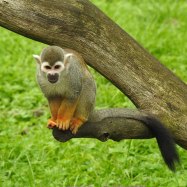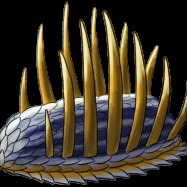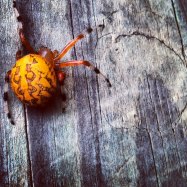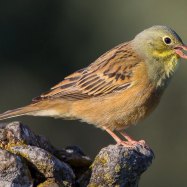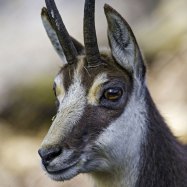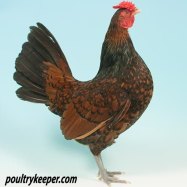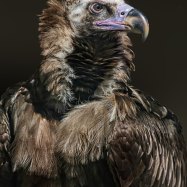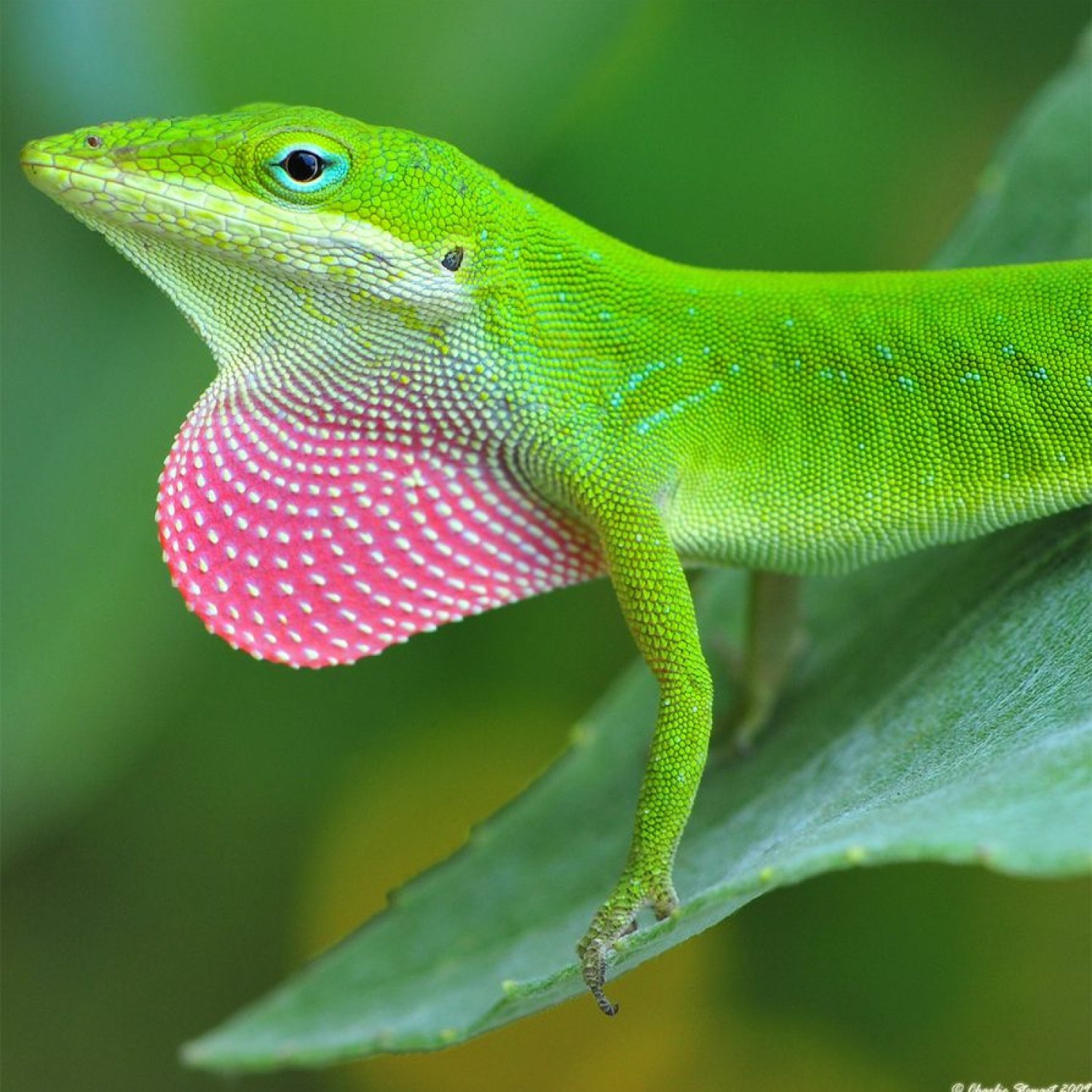
Anole Lizard
5-8 inches
The Anole Lizard, found in the southern United States, is a slim and long-tailed creature that belongs to the Dactyloidae family. With an average length of 5 to 8 inches, they are known for their color-changing abilities and can be found in a variety of colors. Keep an eye out for these fascinating creatures when exploring the outdoors. #AnoleLizard #SouthernUS #Dactyloidae
Animal Details Summary:
Common Name: Green Anole
Kingdom: Animalia
Habitat: Forests, woodlands, and residential areas
Meet the Fascinating Green Anole Lizard
Nature never ceases to amaze us with its diverse range of creatures, and the green anole lizard is no exception. With its bright green coloration and stealthy movements, this little reptile is a sight to behold. But there is much more to this lizard than meets the eye. In this article, we will delve into the fascinating world of the green anole, exploring its taxonomy, behavior, and unique features Anole Lizard.Taxonomy and Nomenclature
Before we get into the details of this remarkable creature, let's first understand its classification. Scientifically known as Anolis carolinensis, the green anole belongs to the Kingdom Animalia and Phylum Chordata. It is a member of the reptilian class Reptilia and the order Squamata, which includes lizards, snakes, and worm lizards. The green anole is part of the family Dactyloidae, which also includes other species of anole lizards.The common name for this lizard, green anole, is derived from its striking green coloration, while its scientific name, Anolis carolinensis, refers to its origin from the state of North Carolina in the United States. This species also goes by the names Carolina anole and eastern anole.
Habitat and Distribution
Green anoles are native to the southeastern United States, specifically in Louisiana, Georgia, Florida, and the Carolinas. They are most commonly found in the southern United States, where they thrive in warm and humid climates.In the wild, green anoles can be found in various habitats such as forests, woodlands, and even residential areas Asian Water Monitor. They are excellent climbers and can often be seen perched on trees and shrubs, basking in the sun. They are also known to take refuge in buildings and gardens, making them a common sight in urban areas.
Physical Characteristics
Green anoles are relatively small lizards, measuring around 5-8 inches in length. They have slender bodies with a long tail, which makes up half of their total body length. Their bodies are designed for agility and speed, allowing them to move quickly and stealthily.One of the most striking features of the green anole is its bright green coloration. However, this is not always the case. These lizards have the ability to change their color depending on their mood and surroundings. They can range from bright green to a more dull, brown color. This color-changing ability is useful for camouflage and regulating body temperature.
Feeding Habits
Green anoles are insectivorous, meaning they primarily feed on insects. Their diet consists mainly of small insects such as crickets, grasshoppers, and beetles. They are skilled hunters and use their long, sticky tongues to catch their prey. And because they are cold-blooded, they rely on external sources (such as the sun) to regulate their body temperature, which is crucial for their metabolism and digestion.Social Behavior
Green anoles are territorial creatures and are known to be solitary animals. However, during breeding season, males may become more aggressive, establishing their territory and competing for females. They communicate with each other through various physical displays, such as head-bobbing and color changes.Another interesting behavior of green anoles is their ability to autotomize, or voluntarily detach their tails, as a defense mechanism. This is common among many lizard species and is used to distract predators, allowing the lizard to escape. The tail will eventually regenerate, but it will not be as long as the original.
Advanced Features of the Green Anole
The green anole may seem like just another small lizard to the untrained eye. However, this tiny creature has some advanced features that make it stand out in the animal kingdom.One of its most notable features is its ability to change color, as mentioned earlier. This is possible due to specialized cells in their skin called chromatophores, which can expand and contract, revealing different pigments. The green anole's color-changing ability not only helps it blend in with its surroundings but also plays a role in thermoregulation, allowing it to absorb or reflect sunlight as needed.
Another standout feature of the green anole is its adhesive toe pads. These lizards are excellent climbers and use their toe pads to grip onto various surfaces, even vertically. This skill comes in handy when searching for food or escaping from predators.
As mentioned earlier, green anoles are also capable of autotomy, or self-detachment of their tails. This advanced defense mechanism not only allows them to escape from danger but also serves as a distraction for predators, saving their lives in the process. Their ability to regenerate their tail is also remarkable and shows the resilience of these creatures.
Conservation Status
Unfortunately, green anoles, like many other reptile species, are facing a decline in population due to habitat loss and introduction of non-native species. In some areas, they are also collected for the pet trade, which further depletes their numbers. However, they are still considered of least concern by the International Union for Conservation of Nature (IUCN).On a positive note, green anoles are well-suited to urban environments and can often be seen in residential areas, giving hope for their survival. It is important to remember that even small creatures like the green anole play a crucial role in maintaining balance in their ecosystems.
Conclusion
In conclusion, the green anole is a remarkable lizard with a range of fascinating features and behaviors. From its ability to change color to its agile movement and self-defense tactics, there is always something intriguing to learn about this little reptile. Despite facing conservation challenges, these lizards continue to thrive in their natural habitats, reminding us of the resilience and diversity of nature. So, the next time you come across a green anole, take a moment to appreciate its beauty and uniqueness.

Anole Lizard
Animal Details Anole Lizard - Scientific Name: Anolis carolinensis
- Category: Animals A
- Scientific Name: Anolis carolinensis
- Common Name: Green Anole
- Kingdom: Animalia
- Phylum: Chordata
- Class: Reptilia
- Order: Squamata
- Family: Dactyloidae
- Habitat: Forests, woodlands, and residential areas
- Feeding Method: Insectivorous
- Geographical Distribution: Southeastern United States
- Country of Origin: United States
- Location: Southern United States
- Animal Coloration: Green or brown
- Body Shape: Slender with a long tail
- Length: 5-8 inches
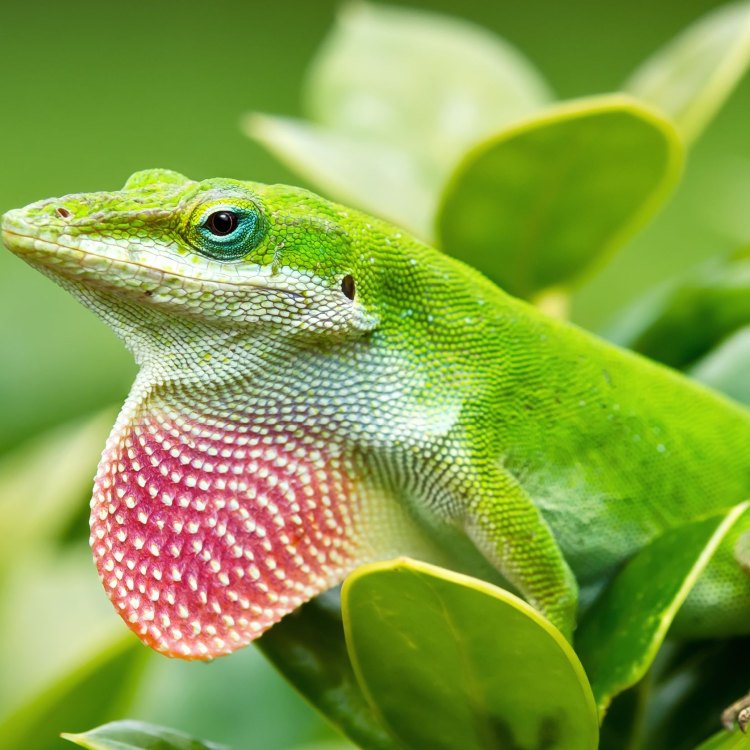
Green Anole
- Adult Size: 5-8 inches
- Average Lifespan: 3-6 years
- Reproduction: Sexual
- Reproductive Behavior: Males defend territories and perform courtship displays
- Sound or Call: Males use head-bobbing and extending throat dewlaps to communicate
- Migration Pattern: Non-migratory
- Social Groups: Solitary
- Behavior: Active during the day, basking in the sun and hunting for insects
- Threats: Habitat loss and predation by birds and larger lizards
- Conservation Status: Least Concern
- Impact on Ecosystem: Important as prey for other species
- Human Use: Popular pet reptile
- Distinctive Features: Ability to change color from green to brown
- Interesting Facts: Can change color to regulate body temperature and communicate
- Predator: Birds and larger lizards
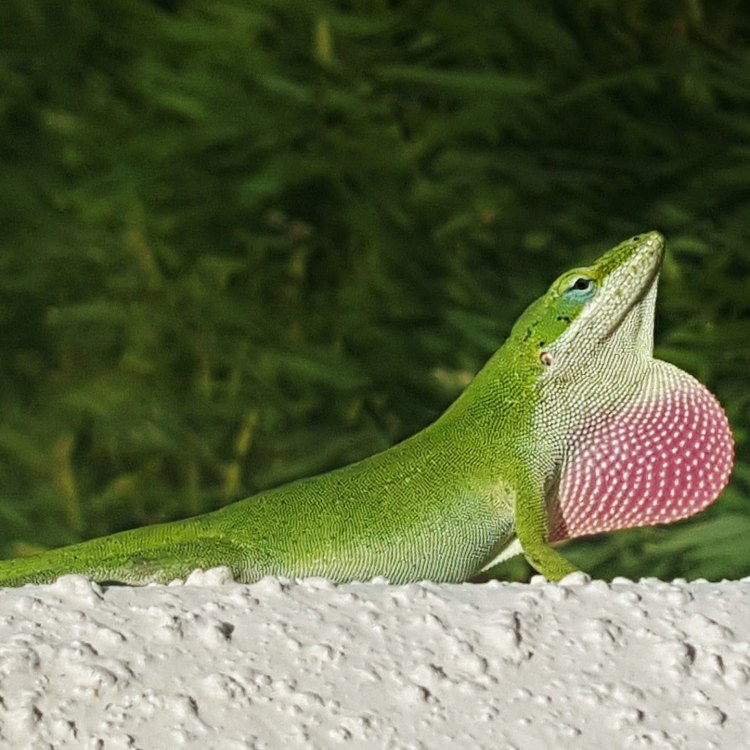
Anolis carolinensis
The Mystical Anole Lizard: A Colorful and Confident Creature
In the vast world of reptiles, there is one creature that stands out with its small size, unique abilities, and confident demeanor – the anole lizard. Often found basking in the sun and perched on tree branches, these colorful and fascinating creatures have captured the attention of many. From its impressive color-changing abilities to its important role in the ecosystem, there is much to be learned and admired about the anole lizard.The Basics of an Anole Lizard
The anole lizard, scientifically known as Anolis carolinensis, is a small reptile that can be found in the southeastern United States PeaceOfAnimals.Com. Measuring between 5-8 inches in length, they are relatively small in size compared to other lizards. However, their small size does not hinder their importance in the ecosystem.These lizards have a relatively short lifespan of 3-6 years, with males typically living shorter lives than females. They reach sexual maturity at an early age, around 9-12 months, and then reproduce through sexual means. Males play an important role in the reproductive process by defending their territories and performing elaborate courtship displays.
Communication through Color and Calls
One of the most distinctive features of the anole lizard is its ability to change color. They have the unique ability to change from green to brown, depending on their environment and mood. This process is known as physiological color change and is controlled by hormones. However, it is not just a defensive mechanism; color change also serves as a way for the lizards to regulate their body temperature and communicate with other members of their species Ant.In addition to changing color, anoles also communicate through head-bobbing and extending throat dewlaps. These displays are mostly used by males to attract a mate or defend their territory. In a way, these displays are a form of language for the lizards, and each species has its own specific patterns and meanings.
Non-Migratory and Solitary Creatures
Unlike many other species of lizards, anole lizards are non-migratory. They are content with staying in the same area, as long as they have enough food and suitable habitat. In fact, they are rarely seen in groups and are mostly solitary creatures. This is because they have a high level of territoriality, and males will fiercely defend their territory from other males.Their solitary behavior is not due to a lack of social skills, but rather a survival mechanism. As small creatures, anole lizards are at risk of being preyed upon by birds and larger lizards. By staying solitary, they reduce the chances of drawing attention to themselves.
Active and Agile Hunters
The anole lizard is an agile and active hunter, mostly active during the day. They spend their time basking in the sun, which helps them regulate their body temperature. However, they also hunt for prey, mostly insects such as crickets and grasshoppers. Their speed and agility make them successful hunters, and they use their long and sticky tongues to capture their prey.Their active behavior also makes them a popular sight in gardens and parks, as they are excellent at controlling insect populations. With their small size and quick movements, they can easily blend into their surroundings, making them hard to spot.
Threats and Conservation Status
While anole lizards are not classified as an endangered species, they still face threats in their natural habitat. One of the main concerns is habitat loss due to human activities, such as deforestation and development. This can have a direct impact on the lizards' survival, as they rely on specific habitats for their survival.Anole lizards also face predation from birds and larger lizards. As mentioned earlier, their small size makes them vulnerable to being preyed upon. However, they have several defense mechanisms, such as their color-changing abilities and their agility, which help them evade predators.
The Importance of Anole Lizards in the Ecosystem
While anole lizards may seem like small and insignificant creatures, they play a crucial role in the ecosystem. As predators of insects, they help control their populations, which in turn maintains balance and diversity in the environment. They also serve as an important source of prey for other species, such as birds and larger lizards.When it comes to protecting the ecosystem, every species has a role to play, and the anole lizard is no exception. By conserving their habitats and ensuring their survival, we are also protecting numerous other species and maintaining a healthy and balanced ecosystem.
An Anole Lizard as a Pet
Aside from their important role in the wild, anole lizards have also become popular as pet reptiles. Due to their small size, they are easy to care for and can be kept in a small terrarium. Their color-changing abilities and unique behaviors also make them fascinating pets to observe.However, before considering an anole lizard as a pet, it is essential to do thorough research and ensure proper care. These creatures have specific needs, and it is crucial to provide them with a suitable environment to thrive in captivity.
In Conclusion
The anole lizard may seem like a simple and straightforward creature, but upon closer inspection, one can see the many remarkable features and behaviors that make it a unique species. From its color-changing abilities to its important role in the ecosystem, the anole lizard is nothing short of fascinating.These small creatures remind us that even the smallest of beings can play an important role in our world. As we continue to learn more about them and their habitat, we can work towards protecting and preserving their existence for generations to come. So, let us take the time to appreciate these mystical anole lizards and everything that makes them unique.
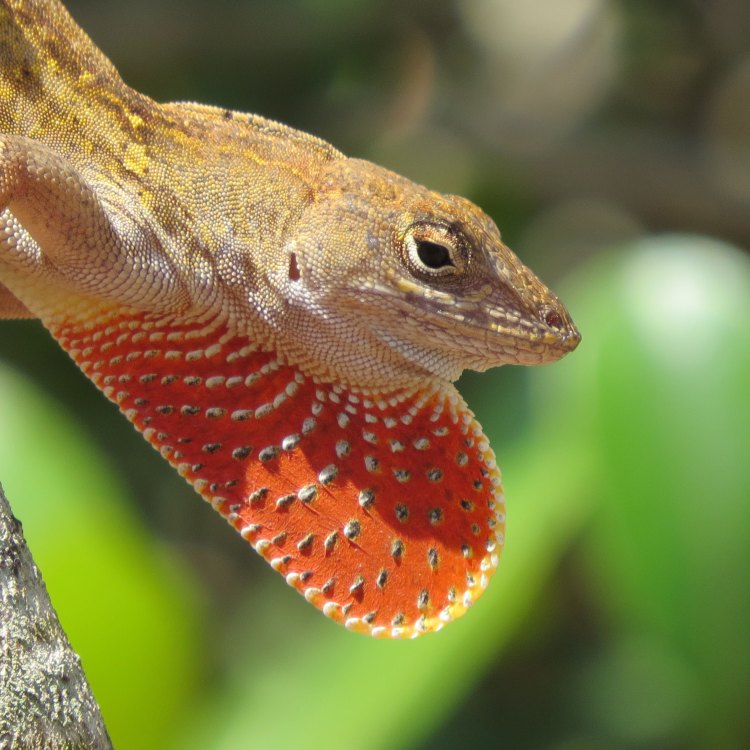
Meet the Fascinating Green Anole Lizard
Disclaimer: The content provided is for informational purposes only. We cannot guarantee the accuracy of the information on this page 100%. All information provided here may change without prior notice.




